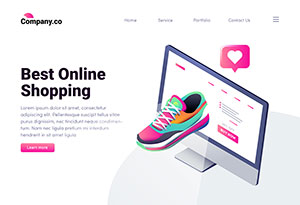
Starting a clothing business is an exciting venture, but it’s also highly competitive. With the right strategies, you can stand out, attract loyal customers, and build a thriving brand. Whether you’re launching a boutique, a streetwear line, or an eco-friendly fashion brand, this guide will walk you through the essential steps to start a clothing business and dominate your niche.
1. Conduct Market Research to Identify Your Niche
Before diving into the world of fashion, it’s crucial to understand your target market. Conducting thorough market research will help you identify gaps in the market and determine what your potential customers are looking for.
- Analyze trends: Use tools like Google Trends, SEMrush, or Ahrefs to identify trending styles, colors, and fabrics.
- Study competitors: Look at successful clothing brands in your niche. What are they doing well? Where are they falling short?
- Understand your audience: Create buyer personas to define your ideal customer’s age, gender, income level, and shopping habits.
By narrowing your focus, you can create a unique selling proposition (USP) that sets your clothing brand apart.
2. Develop a Business Plan
A solid business plan is the foundation of any successful clothing business. It outlines your goals, strategies, and financial projections, helping you stay on track as you grow.
- Define your brand identity: What values does your brand represent? Is it sustainable, luxury, or affordable?
- Set clear objectives: Outline short-term and long-term goals, such as revenue targets or customer acquisition milestones.
- Plan your budget: Calculate startup costs, including manufacturing, marketing, and website development.
A well-structured business plan not only guides your decisions but also attracts investors if needed.
3. Choose the Right Business Model
Your business model determines how you’ll produce, sell, and distribute your clothing. Here are some popular options:
- Print-on-demand: Partner with a print-on-demand service to create custom designs without holding inventory.
- Dropshipping: Work with suppliers who ship products directly to customers, reducing upfront costs.
- Private label: Design your clothing and have it manufactured under your brand name.
- Handmade: Create unique, artisanal pieces for a niche audience.
Each model has its pros and cons, so choose one that aligns with your budget, skills, and goals.
4. Source High-Quality Materials and Manufacturers
The quality of your clothing is a reflection of your brand. Partnering with reliable suppliers and manufacturers ensures your products meet customer expectations.
- Research suppliers: Use platforms like Alibaba or ThomasNet to find reputable fabric and material suppliers.
- Request samples: Test the quality of materials and manufacturing before committing to large orders.
- Negotiate terms: Discuss pricing, minimum order quantities, and delivery timelines to secure the best deal.
If sustainability is a core value, consider eco-friendly materials like organic cotton, recycled polyester, or Tencel.
5. Build a Strong Brand Identity
Your brand identity is more than just a logo—it’s the story you tell and the emotions you evoke. A strong brand helps you connect with customers and build loyalty.
- Design a memorable logo: Use tools like Canva or hire a professional designer to create a logo that reflects your brand’s personality.
- Choose a color palette: Select colors that resonate with your target audience and align with your brand values.
- Craft a compelling tagline: Summarize your brand’s mission in a few words.
Consistency is key. Ensure your branding is cohesive across your website, packaging, and social media.
6. Create an Ecommerce Website
Your website is your online storefront, so it needs to be visually appealing, user-friendly, and optimized for conversions.
- Choose a platform: Use ecommerce platforms like Shopify, WooCommerce, or BigCommerce to build your site.
- Optimize for mobile: Ensure your website is mobile-friendly, as many customers shop on their phones.
- Add high-quality images: Showcase your clothing with professional photos that highlight details and fit.
- Simplify navigation: Make it easy for customers to find products, view sizes, and checkout.
Don’t forget to include SEO-friendly product descriptions and meta tags to improve your search engine rankings.
7. Leverage Social Media Marketing
Social media is a powerful tool for promoting your clothing brand and engaging with your audience. Platforms like Instagram, TikTok, and Pinterest are particularly effective for fashion businesses.
- Post consistently: Share behind-the-scenes content, styling tips, and customer testimonials to keep your audience engaged.
- Use hashtags: Research relevant hashtags to increase your reach and visibility.
- Collaborate with influencers: Partner with micro-influencers who align with your brand to reach new audiences.
For inspiration, check out how brands like Fashion Nova and Gymshark use social media to build their communities.
8. Implement SEO Strategies
Search engine optimization (SEO) is essential for driving organic traffic to your website. By optimizing your content for relevant keywords, you can rank higher on Google and attract more customers.
- Conduct keyword research: Use tools like Ahrefs or SEMrush to find keywords related to your niche, such as “sustainable activewear” or “affordable streetwear.”
- Optimize product pages: Include keywords in titles, descriptions, and alt text for images.
- Create blog content: Write articles about fashion trends, styling tips, or industry news to attract visitors and establish authority.
For more SEO tips, explore resources from Ahrefs Academy or SEMrush Academy.
9. Offer Exceptional Customer Service
Customer satisfaction is the backbone of any successful business. Happy customers are more likely to make repeat purchases and recommend your brand to others.
- Respond promptly: Answer customer inquiries via email, chat, or social media within 24 hours.
- Provide clear policies: Outline your return, exchange, and shipping policies to avoid misunderstandings.
- Personalize interactions: Use customers’ names and recommend products based on their preferences.
Brands like Zappos are known for their exceptional customer service, which has helped them build a loyal following.
10. Analyze and Adapt
The fashion industry is constantly evolving, so it’s important to track your performance and adapt your strategies accordingly.
- Monitor analytics: Use tools like Google Analytics to measure website traffic, conversion rates, and customer behavior.
- Gather feedback: Ask customers for reviews and suggestions to improve your products and services.
- Stay updated: Keep an eye on industry trends and adjust your offerings to meet changing demands.
By staying agile and responsive, you can stay ahead of the competition and continue to grow your clothing business.
Conclusion
Starting a clothing business is no small feat, but with the right planning, strategies, and execution, you can turn your passion for fashion into a successful and profitable venture. From conducting thorough market research and building a strong brand identity to leveraging social media and optimizing your website for SEO, every step you take brings you closer to standing out in a competitive industry.
Remember, the key to crushing the competition lies in understanding your audience, delivering high-quality products, and providing exceptional customer experiences. Stay adaptable, keep an eye on industry trends, and continuously refine your strategies to meet the ever-changing demands of the fashion world.
Whether you’re launching a sustainable activewear line, a luxury boutique, or an affordable streetwear brand, the journey will be challenging but rewarding. By following the steps outlined in this guide, you’ll be well-equipped to build a clothing business that not only survives but thrives.
Now it’s your turn to take action. Start small, stay consistent, and watch your clothing brand grow into a force to be reckoned with. The fashion industry is waiting for your unique vision—make it happen!
How We Helped an E-commerce Brand Increase Sales by 35% with Professional Retouching
When it comes to e-commerce, first impressions are crucial. A shopper’s decision to click “Add…
How to Use Ghost Mannequin Photography to Showcase Your Apparel Products
Empowering Success TogetherHow to Use Ghost Mannequin Photography to Showcase Your Apparel ProductsWe provide comprehensive…
Spring Fashion 2025: The Hottest Colors to Wear
Empowering Success TogetherSpring Fashion 2025: The Hottest Colors to WearWe provide comprehensive solutions and support…
Real Estate Photo Remote Editing: The Ultimate Guide to Enhancing Property Images
Empowering Success TogetherReal Estate Photo Remote Editing: The Ultimate Guide to Enhancing Property ImagesWe provide…
DIY vs Professional Ecommerce Photo Editing: Which is Right for You?
Empowering Success TogetherDIY vs. Professional Ecommerce Photo Editing: Which is Right for You?We provide comprehensive…
The Best Impact of White Backgrounds on Ecommerce Product Photography
Empowering Success TogetherThe Best Impact of White Backgrounds on Ecommerce Product PhotographyWe provide comprehensive solutions…
LET’S COLLABORATE TO ENHANCE YOUR PHOTO
OUR ECOMMERCE PHOTO EDITING SERVICES READY FOR YOU!
Get the Awesome Quote!
One of the most important things is to pick the best professional ecommerce photo editing services company.
Quick Peek at Our Quality!
Every issue that arises will be explained in detail. It’s time to start planning your adventures with our ecommerce photo editing service.






